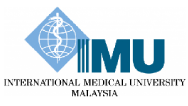Risk factors of peripheral venous catheterization thrombophlebitis
Authors: Wilkinson Yoong Jian Tan, Jo Wearn Yeap, Sharifah Sulaiha Syed Aznal.
ABSTRACT
Background: Peripheral venous catheterisation is indispensable in modern practise of medicine. The indications of venous access should be weighed against the risk of complications, the commonest being thrombophlebitis. Thrombophlebitis causes patient discomfort and the need for new catheter insertion and risk of developing further widespread infections.
Methodology: This observational study was conducted on adult patients admitted to the surgical and medical ward of a tertiary hospital in Negeri Sembilan Malaysia in 2011. Four researchers visited patients daily and examined for signs of thrombophlebitis; warmth, erythema, swelling, tenderness or a palpable venous cord. Risks factors that were studied in this research were patient/s age and gender, duration of catheterization, use of catheter for infusion, size of catheter, site of catheter insertion and types of infusate. Thrombophlebitis was graded using a scale adapted from Bhandari et al. (1979).
Results: In total, 428 patients were recruited with an incidence rate of thrombophlebitis of 35.2%. Among those who developed thrombophlebitis, 65% had mild thrombophlebitis, 19% moderate and 8% severe thrombophlebitis. Results showed that female patients had a significant increased risk of developing thrombophlebitis. Also risk increased significantly with increased duration of catheterization and usage of the catheter for infusion. The age of a patient, types of infusate use, size of catheter and site of catheter insertion did not significantly influence the development of thrombophlebitis.
Conclusion: The study showed that risk of developing thrombophlebitis is significantly increased among female patients, and also with increased duration of catheterization and use of the peripheral venous catheter for infusion. We recommended elective replacement of catheter every 72 hours and daily examination of catheters for signs of thrombophlebitis by a healthcare personnel.
Keywords: Thrombophlebitis, Catheter, Catheter-Related Infections, Intravenous Infusions, Patient Care.
Citation: IeJSME 2012 : 6(1) 24-30

